More information on “Placing a Telephone Call”.
Click here to return to Gallery 1.
More information on “Placing a Telephone Call”.
Click here to return to Gallery 1.
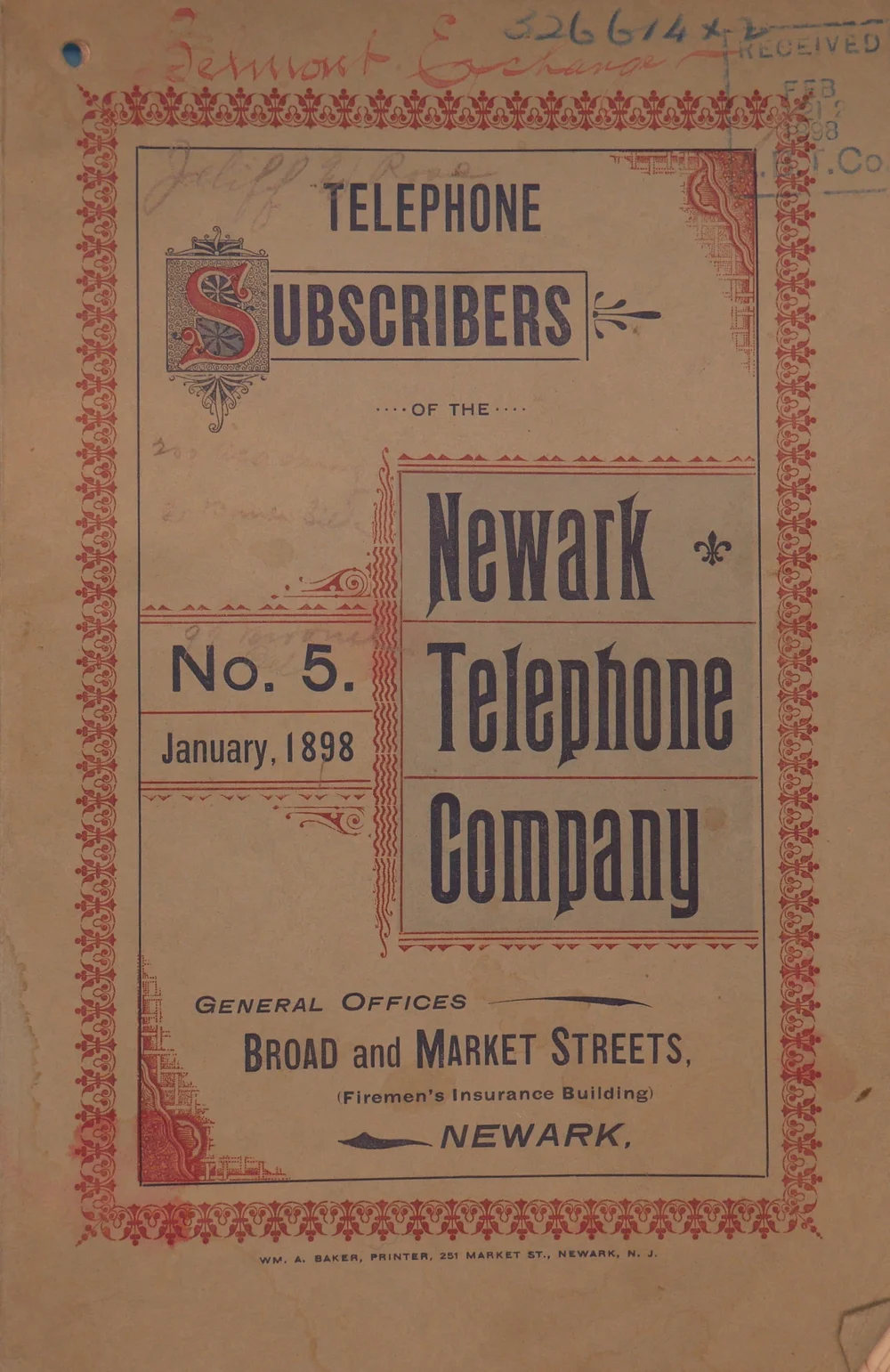
This 1879 directory for the city of Newark takes up just one sheet of paper. Considering the first phone call was only made three years earlier, however, the growth of the Bell System is remarkable. Note the absence of phone numbers.
Collection of AT&T Archives and History Center.

This 1897 phone directory shows that Morven had telephone service by that year. Callers could reach Helen and Bayard Stockton at number 8. Famous Princeton alumni and benefactor, Moses Taylor Pyne could be reached at Drumthwacket at number 1.
Collection of Princeton University Library.
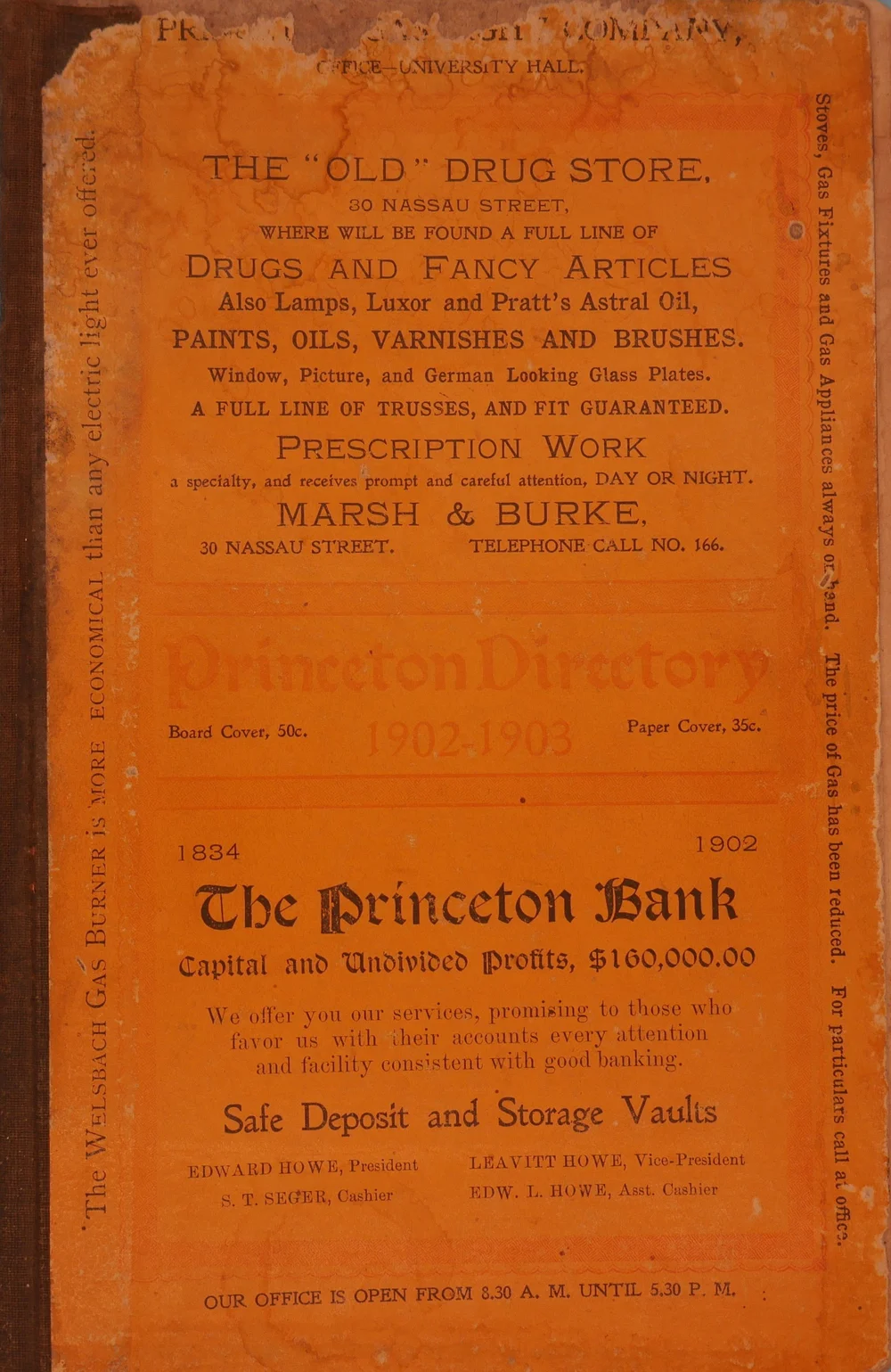
On November 30, 1884 Princeton’s first switchboard was placed at the corner of Nassau Street and University Place inside the University’s “Old Commons” building. Telephone books grew out of town directories which previously listed addresses. As more subscribers had phone service, telephone numbers began to be included.
Collection of the Historical Society of Princeton.
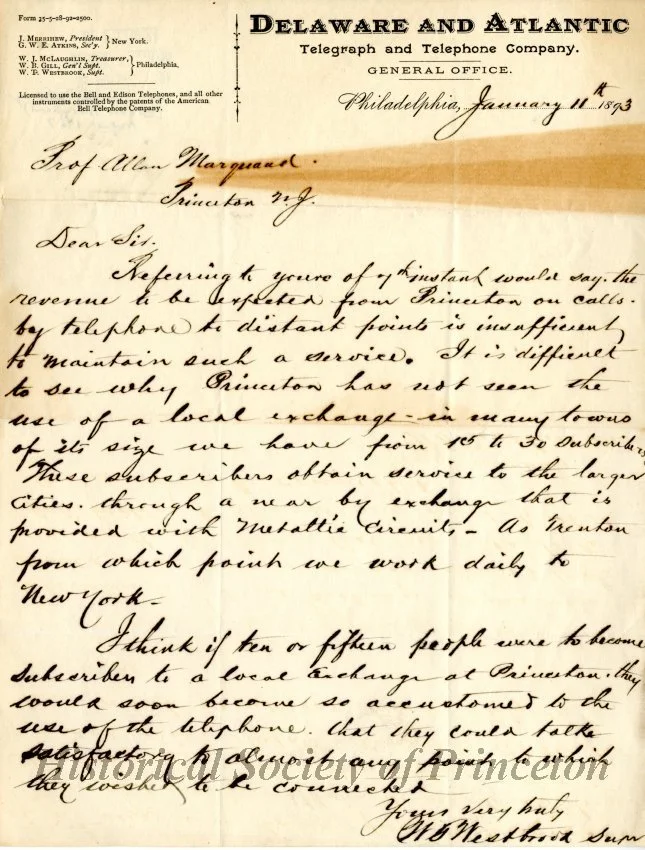
In this letter from W.T. Westbrook of the Delaware and Atlantic Telegraph and Telephone Company to Allan Marquand, Westbrook explains that, “...if ten or fifteen people were to become subscribers to a local exchange at Princeton they would soon become so accustomed to the use of the telephone that they could talk satisfactorily to almost any point to which they wished to be connected.” The Delaware and Atlantic Telegraph and Telephone Co. handled local exchanges. Long distance exchanges were handed off to AT&T.
Collection of the Historical Society of Princeton.

Although telephones were relatively simple machines, new technology had to be learned so step-by-step instructions were provided to help customers make a call.
Collection of AT&T Archives and History Center.
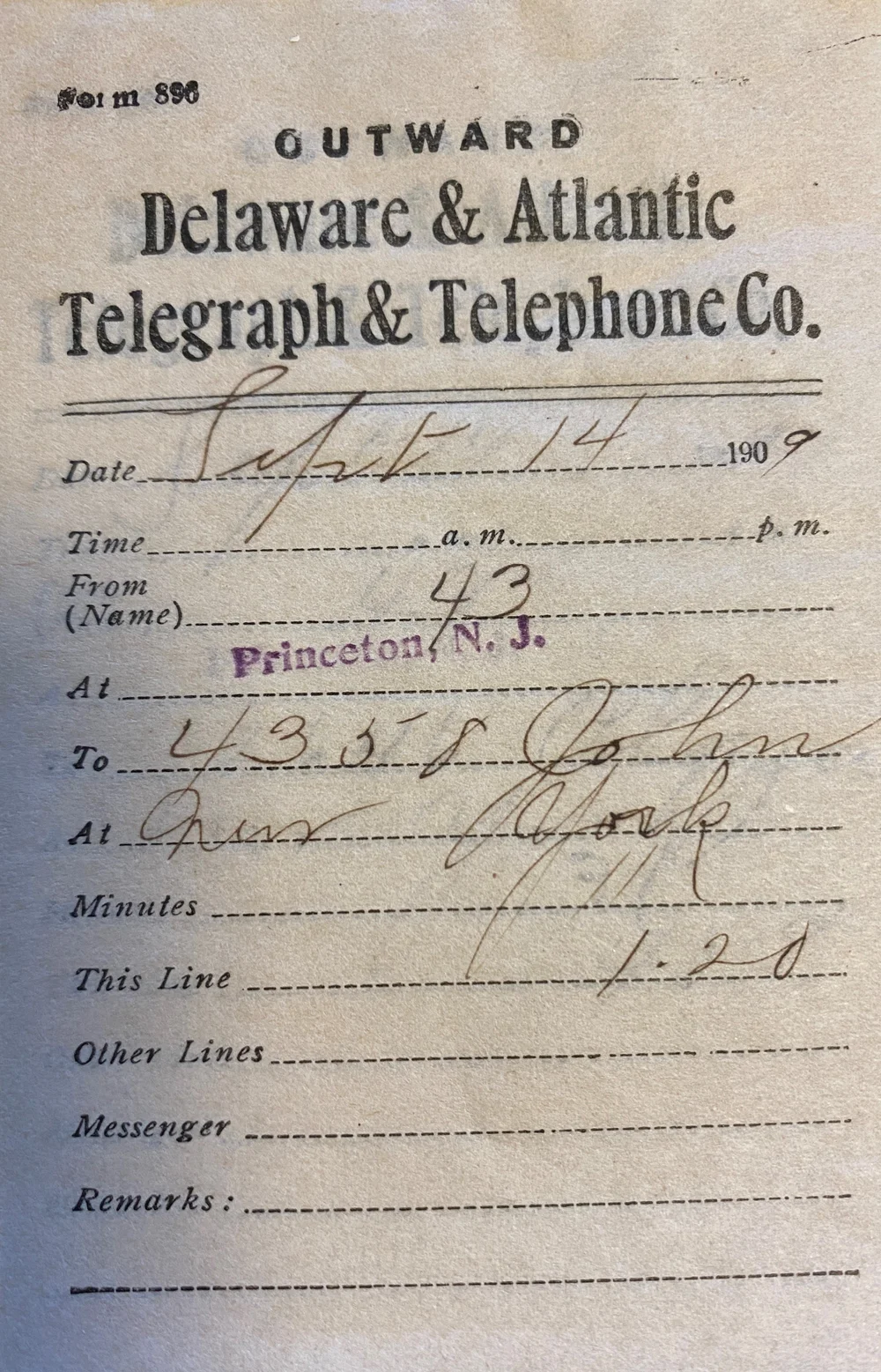
In addition to manually connecting calls, operators would also need to record the length of the call for billing purposes. The clock stamps on the back mark the duration of the call. This three-minute call cost ten cents.
Collection of the Historical Society of Princeton.
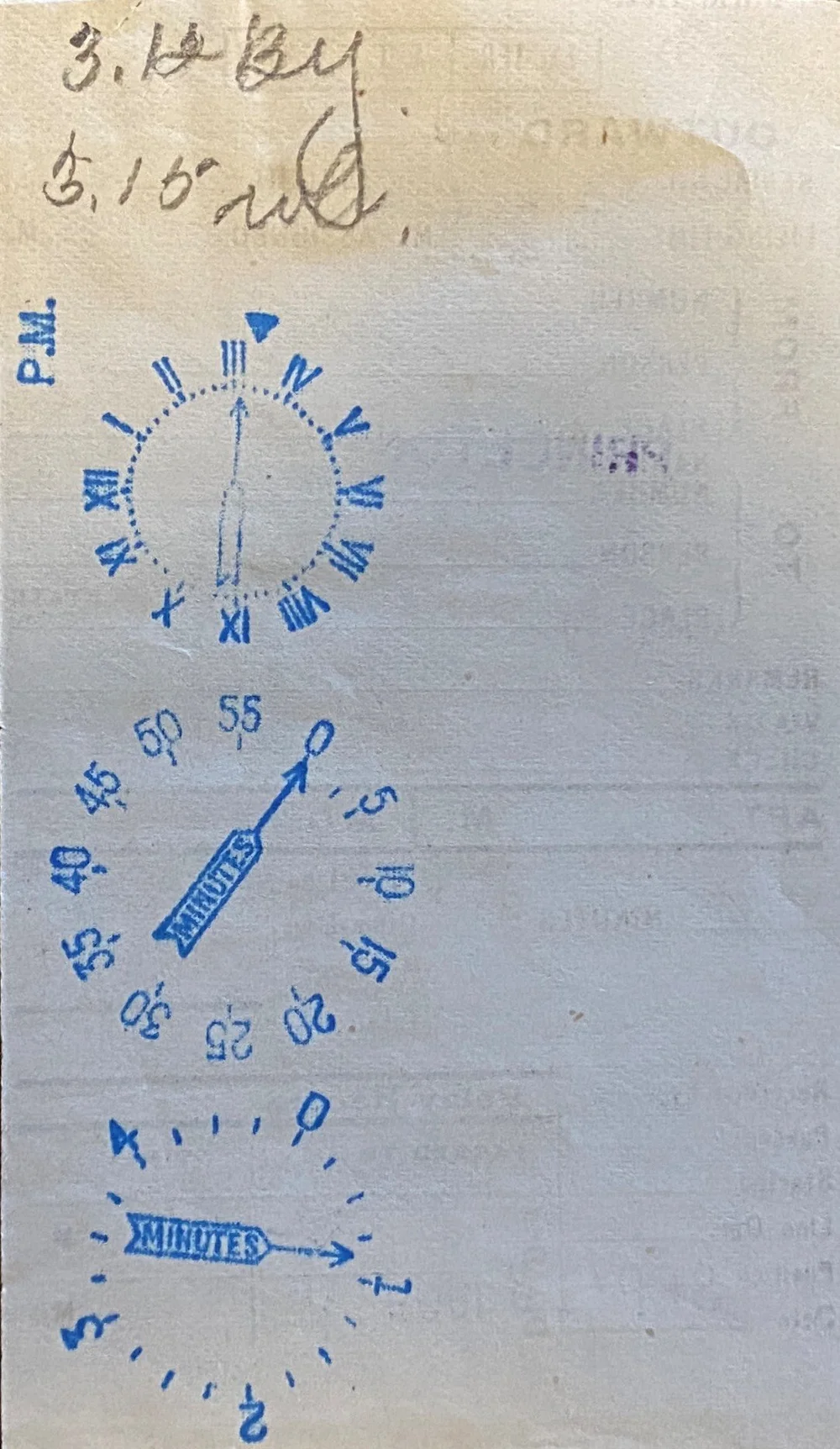
In addition to manually connecting calls, operators would also need to record the length of the call for billing purposes. The clock stamps on the back mark the duration of the call. This three-minute call cost ten cents.
Collection of the Historical Society of Princeton.
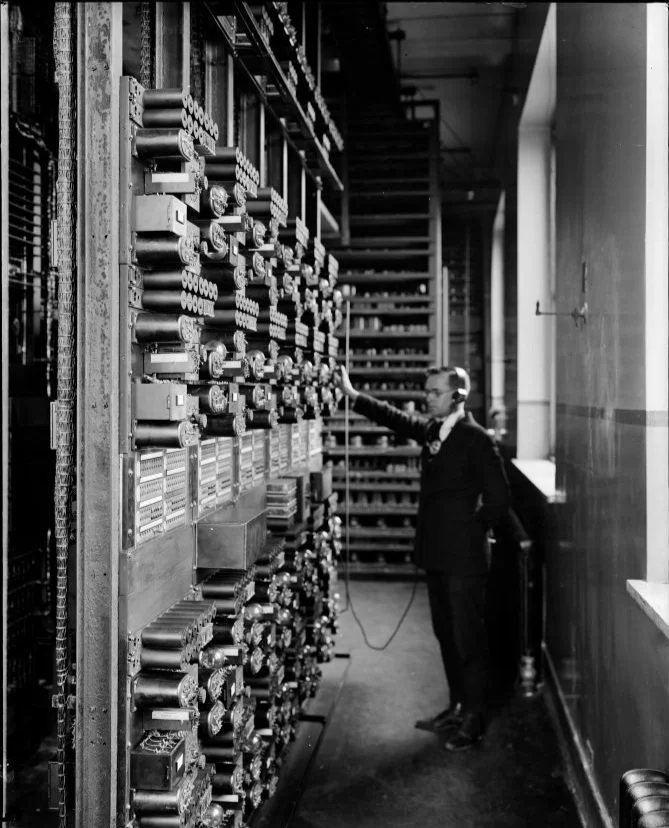
This photo depicts the Bell Telephone Company installation at 32 Nassau Street (today’s Lululemon Store). Princeton’s night operators were to call Trenton on the hour to prove they were awake on the job. In 1910, when Halley’s Comet appeared, the operator slipped away to Bayard Lane to catch a glimpse, leaving the switchboard unattended for an hour.
Image Courtesy of the Historical Society of Princeton, Rose Studio Photo Collection.
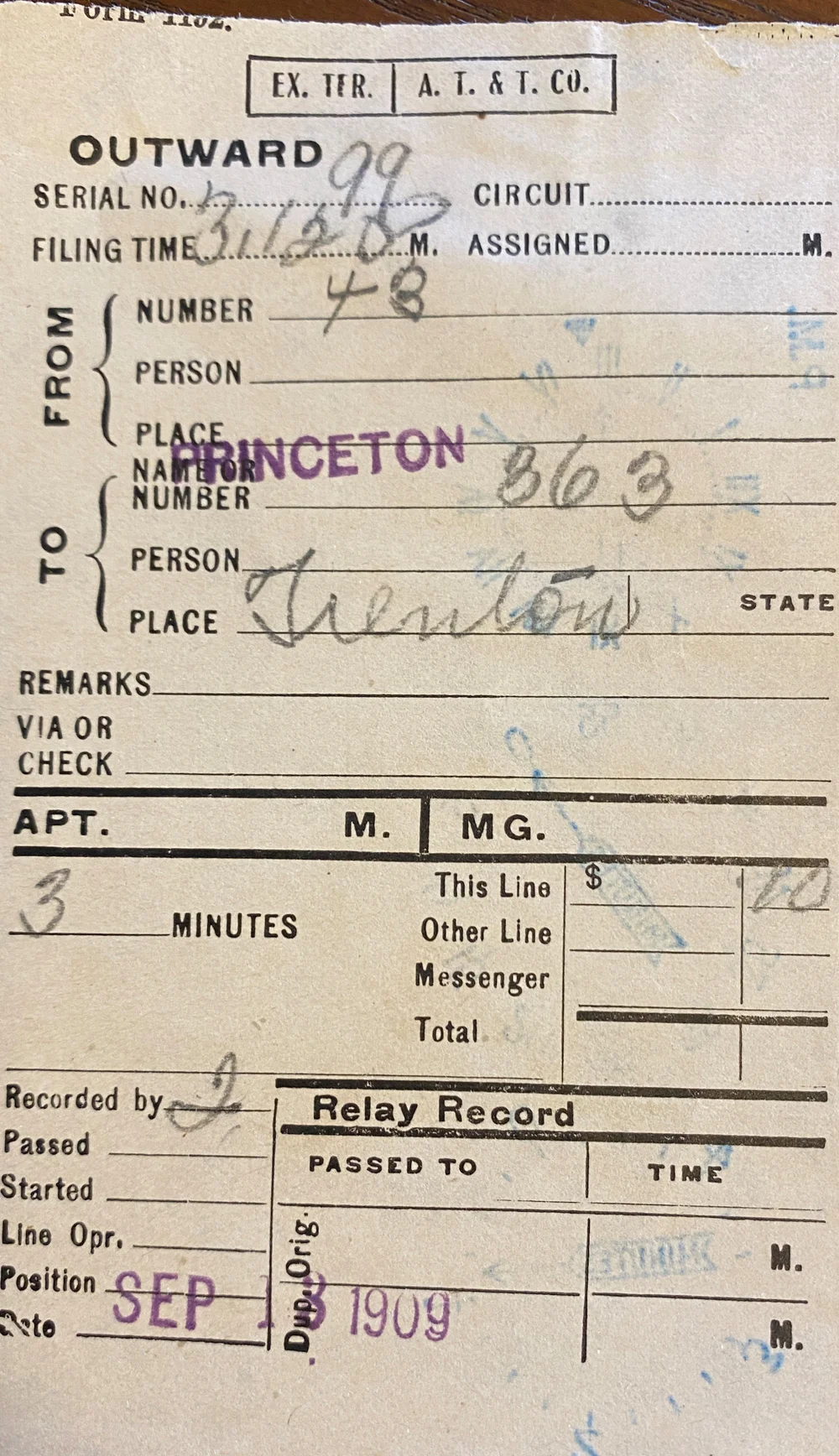
In addition to manually connecting calls, operators would also need to record the length of the call for billing purposes. The clock stamps on the back mark the duration of the call. This three-minute call cost ten cents.
Collection of the Historical Society of Princeton.
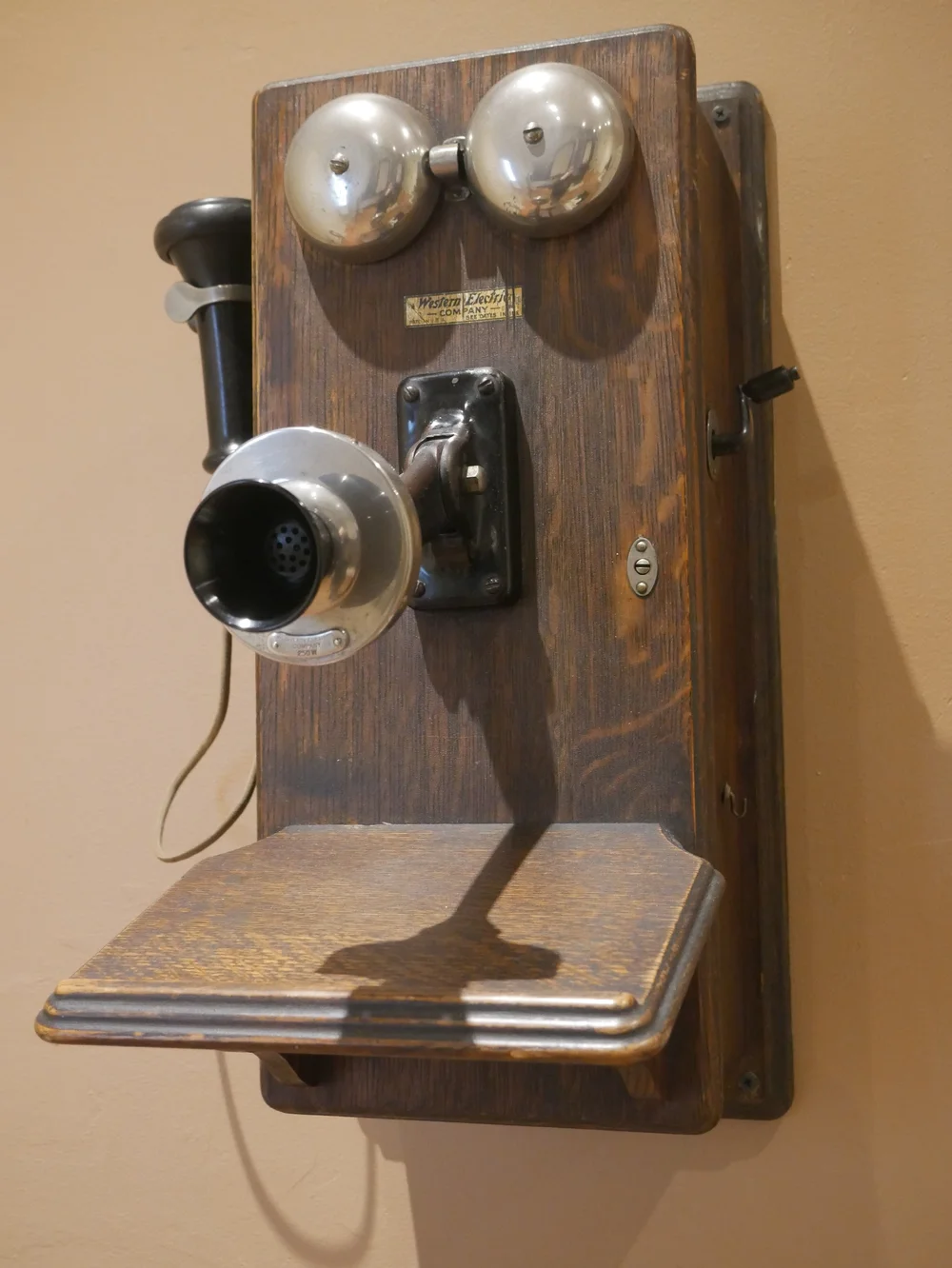
The earliest phones were wall mounted, like this model. They consisted of a speaker box, a handheld receiver, and a ringer to alert the owner to a call. Note there is nothing to dial with because telephone numbers did not exist. To make a call, the user would hand crank the Magneto battery to power the phone, then speak to the operator who would connect the call. The telephone was not a privately-owned piece of equipment, rather it was rented (much like internet routers are today from cable companies).
Collection of AT&T Archives and History Center.